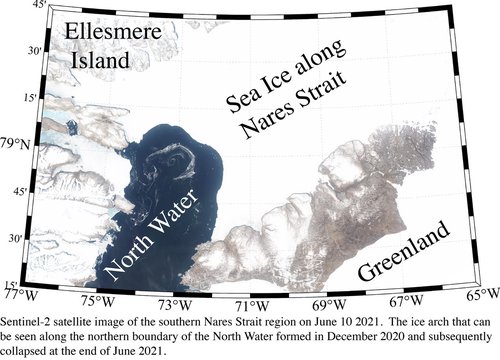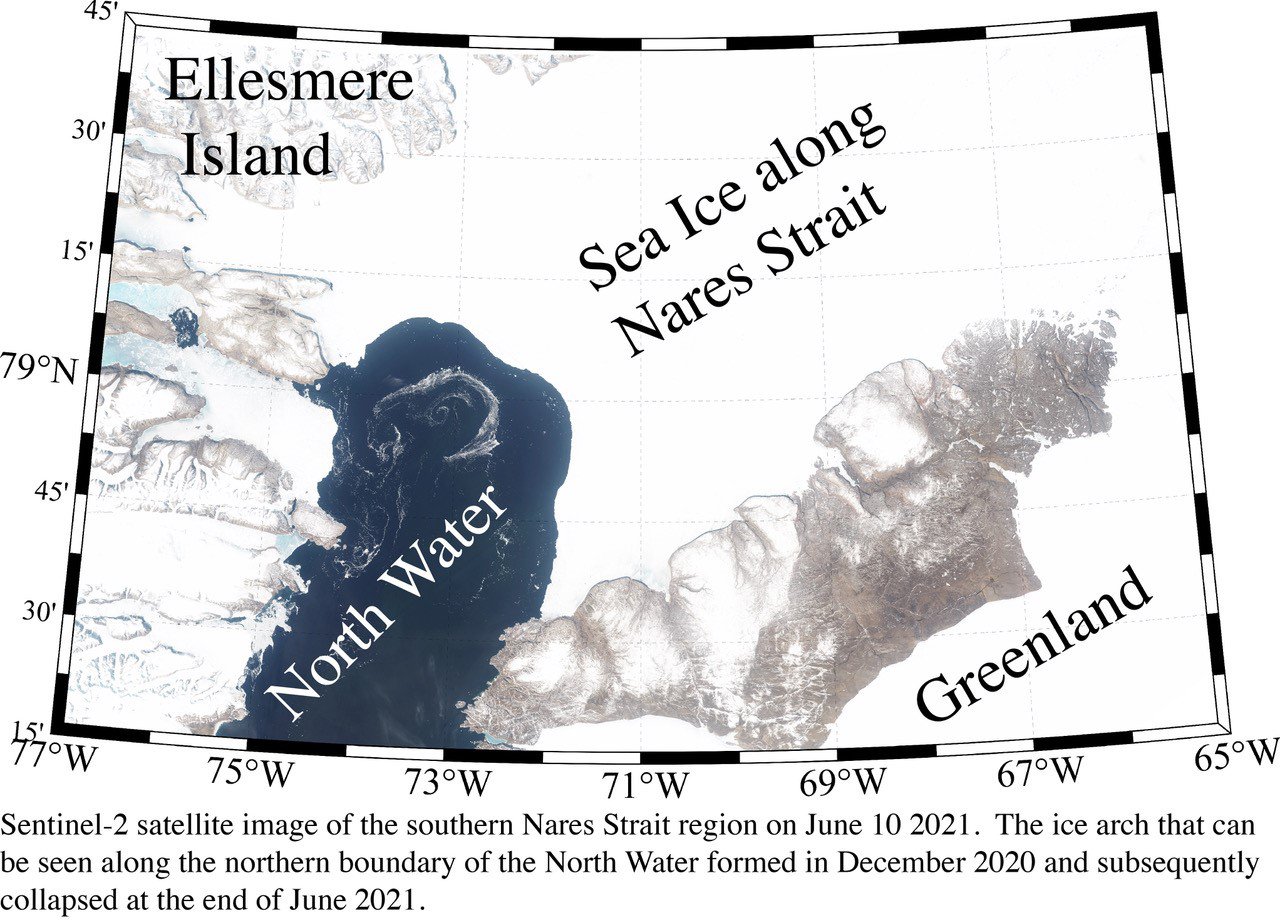The Arctic and the “Last Ice Area”
Can you tell us a little bit about the "Last Ice Area” in the Nares Straight and its importance?
The Arctic is experiencing a dramatic reduction in sea ice extent. During the 1980s, the area covered by sea ice in September was ~7 million square kilometers. Now it is ~4 million square kilometers. In addition to the loss of sea ice cover, the Arctic is also experiencing a trend towards a younger and thinner ice pack. This loss of the thick multi-year ice, that is ice that has survived at least one melt season, is particularly troublesome for ice dependent species such as polar bears. Climate models forecast that during the summer, the Arctic will be ice free, defined to be less than 1 million square kilometers of ice cover, sometime in the middle of this century. When this happens, all the ice that is remaining will be situated north of Canada and Greenland. This area is now referred to as the Last Ice Area and it is of vital importance as it will act as a refuge for ice dependent species until we can hopefully cool the planet down allowing sea ice to expand in the Arctic. The Last Ice Area is a region of thick multi-year ice that has not been extensively studied. There is increasing evidence that the sea ice in the Last Ice Area is more dynamic and may not be as resilient to the loss of sea ice as previously thought.
Nares Strait, situated between Ellesmere Island and Greenland, is the main pathway along which ice leaves the Last Ice Area. Our work has shown that the flux of thick multi-year ice along the Strait has doubled over the past 20 years.
Why did you want to study this area and what is happening to the ice there?
This area has not been extensively studied and it has a number of interesting features, such as ice arches and polynyas, that may be contributing to the loss of sea ice from this region. Ice arches form along Nares Strait most winters and when they are present, they block sea ice from exiting the Last Ice Area along the Strait. They can be up to 100 km in length and remain in place for up to 6 months. There is evidence that the thinning of the ice in the region is resulting in weakened arches that are now collapsing earlier. This is one mechanism that is contributing to the increase in ice export along Nares Strait. Polynyas are regions of open water embedded in the ice pack. They are regions of incredible biodiversity as a result of the presence of open water. The exit region of Nares Strait has the largest and most productive polynya in the Arctic, the North Water Polynya. For centuries Indigenous peoples have used this polynya as a food source during the winter. It was also a popular region for whaling and sealing during the 19th Century. The existence of the North Water is also dependent on the presence of ice arches along Nares Strait and so there is also concern that the changes we are seeing in the arches may impact this polynya. My research group has also identified new polynyas that are now forming in the Last Ice Area. This may also point to a reduction in the resiliency of sea ice in the region.
What is the long term impact of the diminishing ice?
Sea ice plays a number of roles in the climate system. Because it is bright, it reflects a lot of sunlight back to space. As such it acts as an ‘air conditioner’ for the planet. It also plays an important role in many Arctic ecosystems as well as being essential for traditional ways of life for the Indigenous peoples of the Arctic. The Last Ice Area is of particular importance as it will, most likely, be a refuge for ice dependent species after the Arctic becomes ice free sometime this century. If it is not as resilient as previously thought, then this refuge is at risk as are the species that depend on it.


Is there anything that can be done to slow down the process?
Unfortunately the only way to slow down this ice loss is to reduce our emissions of the greenhouse gases that are causing the planet to warm. The last report from the Intergovernmental Panel of Climate Change has estimated that we have only 20-30 years to act before the warming leads to irreversible impacts. One of which would be the loss of Arctic sea ice.
What else is your group working on?
For many years, my group has been part of an international collaboration looking at how the ocean and atmosphere exchange heat, moisture and energy in the presence of sea ice. We have undertaken 3 large-scale field experiments involving research ships and aircraft around the sub-polar North Atlantic studying this exchange. This research is helping to improve our understanding of a major ocean current system known as the Atlantic Meridional Overturning Circulation.
Read more:
https://www.nature.com/articles/s41467-020-20314-w

